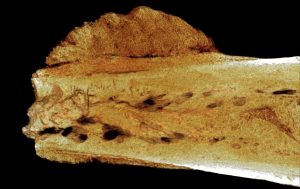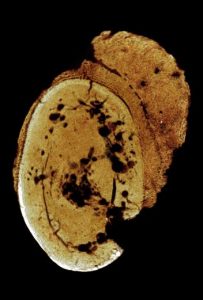Scientist using 3-D imaging diagnosed an aggressive type of cancer called osteosarcoma in a foot bone belonging to a human relative who died in Swartkrans Cave in South Africa. The remains are dated to between 1.6-1.8 million years ago. The discovery signifies that the triggers for the disease are embedded deep within the human evolutionary past.

Using a method called micro-CT imaging, the research team studied detailed 2-D and 3-D images of the fossil’s interior. Images recorded the density differences within the bone and generated views of the fragment from all directions. The abnormal growth pattern of bone tissue led the team to diagnose the condition as osteosarcoma, which today afflicts mostly children and young adults. The fossil, a fragment of a toe bone from the left foot, is the only part of the skeleton that was found. It preserved too little information to determine which hominin species it belonged to and the age of death.

Study co-author Edward Odes of the University of the Witwatersrand stated that the capacity for these diseases is ancient, and it’s within us regardless of what one does to oneself. Evidence for cancer has also been elusive in the fossil record, which preserves only a miniscule fraction of the bones of individuals who lived at any given time.
(after National Geographic)